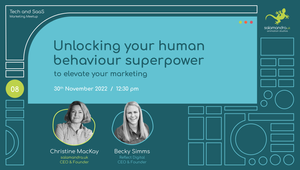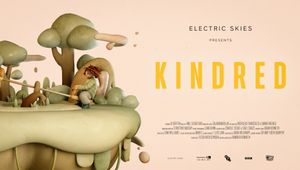
Agency-Brand Communication Goals to Aim for in 2019

Agency-Brand relationships can be challenging to maintain - to quote Mad Men, 'The day you sign a client is the day you start losing them'. Many major brands cite trust issues due to smoke and mirrors in the marketing industry, and frustration with a lack of seeing eye to eye on measurable goals. Agencies, on the other hand, are increasingly frustrated with budget cuts, long lead times on decision making and vague briefs. Having recently come across HubSpot’s brilliant customer code, we got thinking about some simple ways both agency side and brand side can look to improve communications in 2019, to build stronger, more effective and creative relationships.
Sometimes it’s a simple as rewording a question or asking the question at a different stage in the process, in order to create a smoother and more effective workflow.
Making your Budget Work for You
Brands Ask: We like the idea, now can you do it cheaper?
Instead Ask: This is my budget, what can you create?
One of the biggest bugbears on the agency side is that, on investing studio time to come up with a proposal and work out costing - brands will often ask if agencies can do it cheaper. From the agency side, this often causes frustration, as it implies that either the agency is not pricing transparently, and overcharging to start with, or that the client is asking the agency to create something that is outside of the remit of their budget, at a loss. However, many agencies will try to work with clients to find a solution within their budget, if they know this up front. Working to budgets is not a problem, so long as the studio time spent on idea generation takes this scope into account. If agencies are only made aware of the budget after proposals are created, this could just be wasting everyone's time. Understandably Brands are not always aware of how much the creative should cost, and therefore how much to budget for - especially if commissioning the creative for the first time. As a solution, Agencies should try to help clients put together a robust and clear briefing and be upfront about costs as early in the process as possible, even if only at a perimeter level.
Big Picture Thinking
Agencies Ask: What do you want this campaign to look like/say?
Instead Ask: What are your marketing plans/goals for this quarter/year?
Brands often complain that agencies focus too much on individual creatives and campaigns, and not enough on the business side of marketing. Often marketers need to concentrate on meeting their goals for customer conversions and buy-in from stakeholders, rather than the actual creatives. The frustration comes from the feeling that agencies do not understand these internal processes, especially change management processes, that generally mean innovation and change to marketing techniques are incredibly difficult to 'sell' internally. In light of this, Agencies need to make more of an effort to ask brands what their greater goals and marketing plans are, so they can build a proposal in a way that will make the internal sell easier for marketing teams. Equally, Brands also need to understand that there has to be a compromise - Sarah Hanson at Partners + Napier points out the paradoxical nature of the frequently asked 'deliver an innovative new approach to achieve X goal, along with some case studies that prove your idea will be successful'. Risk taking is never easy for brands, when guaranteed ROI is so essential in marketing plans, but agencies equally can't be expected to guarantee the success of an entirely novel idea.
It’s about the People, not Numbers
Brands Ask: How many people work out of your office?
Instead Ask: Do you have the capacity to do this job for us?
Agencies come in all shapes and sizes, especially in this digital age, and often brands fear a lack of transparency as to who is actually creating the work for them. While this is understandable - the question of ‘how many people work out of your office?’ does not actually answer these worries, and so can be frustrating for agencies - especially smaller agile agencies. Put it this way – on one hand, you could have an agency of 50 people, with many departments and specialisms, and only a few of them are animators, for example. On the other hand, you could have a small agile agency of 10 people, where all the creatives work across many applications, including animation. Ultimately the agencies could output the same volume of animation work, and the smaller agency might actually produce a more joined up offering, as the same team has worked across a number of campaign deliverables. However, brands will very often have greater faith in the larger agency. As understandable as their concern is, brands need to trust that if an agency says they have the capacity, they will make it happen.
Collaboration is Mutually Beneficial
Agencies Ask: Why are you working with so many agencies?
Instead Ask: How can your agencies work together to create a seamless output?
This is always a tricky one for agencies - ultimately, we are all businesses, so it goes against the grain to give up territory to other agencies when it comes to creating for brands. In part, this is down to agencies being attached to their creative output, and not wanting it to be re-interpreted incorrectly by another agency. However, looking at it from the other side, for many big brands, the risk of having all their eggs in one agency shaped basket is understandably avoided. Given that this is standard practice, the best way forward to create a cohesive vision all parties can be happy with is to collaborate with other agencies. Ultimately successful and cohesive output across the creative teams working to support a brand, is more likely to secure future investment and greater trust in agency output, for all parties involved.
To conclude, there can be many frustrations in the collaboration between brands and agencies, all of which can be resolved with each trying to gain a greater understanding of the other’s point of view, internal pressures and expectations from the relationship. To quote Australian model, Miranda Kerr ‘I think for any relationship to be successful, there needs to be loving communication, appreciation, and understanding,’ (overly soppy and clearly about romantic relationships, but it’s Christmas - we’re feeling a little sentimental). Our hope for 2019, is that brands and agencies can both look to give a little more communication, appreciation and understanding, to forge even greater relationships – Merry Christmas, and a Happy New Year to all!
Emma Rhodes is a designer at Salamandra UK










